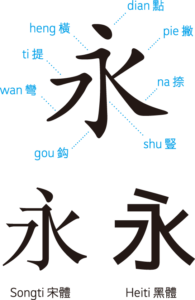- From: Liu Zijian via GitHub <sysbot+gh@w3.org>
- Date: Fri, 12 Aug 2022 04:47:30 +0000
- To: public-css-archive@w3.org
> Although I'm not strongly against about it, I don't think it's worth the change to the specs and implementations. > > [#7577 (comment)](https://github.com/w3c/csswg-drafts/issues/7577#issuecomment-1209711033) > > > and in practice the two should be roughly identical in font coverage anyway. > > Speaking of font coverage, they are not the same in _web_ fonts. I don't know how things are going on in #3135 , but if `ic` requires implementations to download the font, then 永 (U+6C38) has higher chance to cause extra font download compared to 水 (U+6C34): > > * In [Noto Sans Japanese](https://fonts.googleapis.com/css2?family=Noto+Sans+JP), 水 (U+6C34) is placed in the 5th most used characters bucket, whereas 永 (U+6C38) is in the 22nd > * In [Noto Sans Traditional Chinese](https://fonts.googleapis.com/css2?family=Noto+Sans+TC), 水 is in the 2nd bucket, and 永 is in the 5th > * In [Noto Sans Simplified Chinese](https://fonts.googleapis.com/css2?family=Noto+Sans+SC), 水 is in the 3rd bucket, and 永 is in the 6th > * In [Noto Sans Hong Kong](https://fonts.googleapis.com/css2?family=Noto+Sans+TC), 水 is in the 2nd bucket, and 永 is in the 5th > * In [Noto Sans Korean](https://fonts.googleapis.com/css2?family=Noto+Sans+KR), 水 is in the 16th bucket, and 永 is in the 39th As a Chinese, the priority of bucket sorting is lower than the priority of meaning in culture. '永' contains all Chinese language strokes, rather than '水'. In Typography Design , '永' is always used most common. Here are some references: [Designing with the Hanzi script – Keith Tam](https://keithtam.net/designing-with-the-hanzi-script/)  [Can a Chinese font be analysed and criticised like a Western (alphabetical) one? - Quora](https://www.quora.com/Can-a-Chinese-font-be-analysed-and-criticised-like-a-Western-alphabetical-one) > A good way to understand the varieties of strokes is by looking at the character 永 (yǒng), which contains the 8 most common strokes in the regular script. Together, they are known as the “Eight Principles of Yong.” > >  > > Although the Eight Principles are a calligraphy concept, the terms for which are shared with typography. >  Lastly, the use of '水' or '永', the choice should be made by at least a native speakers of CJK. -- GitHub Notification of comment by Siricee Please view or discuss this issue at https://github.com/w3c/csswg-drafts/issues/7577#issuecomment-1212725871 using your GitHub account -- Sent via github-notify-ml as configured in https://github.com/w3c/github-notify-ml-config
Received on Friday, 12 August 2022 04:47:32 UTC